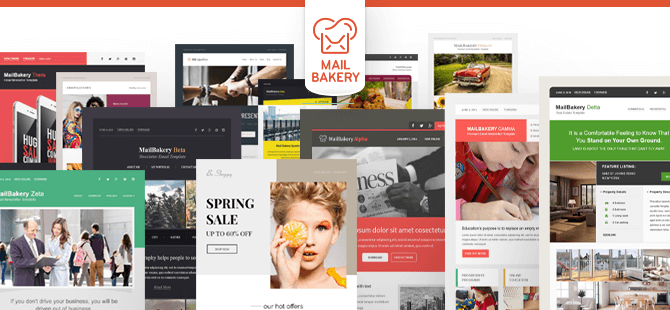Email Marketing ROI vs. Social Media Marketing ROI — Which Is Better?
Reading Time: 5 minutesMany modern business owners dream of the day their brand takes the Internet by storm, loyal followers spreading their posts like wildfire. With the unlimited potential reach of social media posts, it’s no surprise that social channels have become a hot topic for marketers everywhere. But is social media marketing better than email marketing? Not quite.
Despite social media’s trendy appeal, email marketing has a higher ROI of $42 for every $1 spent. That comes to a jaw-dropping 4200% for an email marketing ROI. Social media, meanwhile, has a significantly smaller ROI, with an average of 28%. This is a remarkable contrast, begging the question: why is there such a large difference between email marketing ROI vs. social media marketing ROI?
Multiple variables affect your content’s ability to convert. But a few decisive differences include your ability to reach your target audience, how people will share your content, and who ultimately sees your content.
In this blog:
Reaching Your Target Audience

Marketers who specialize in social media marketing often speak about the advantages of targeted advertisements. Unlike traditional marketing mediums like TV ads or billboards, social media ads include tools that allow brands to target specific audiences based on data. This gets social media ads off to a good start. However, marketers often underestimate their audience’s ability to ignore an ad. Social ads often fade into the background like visual white noise, lost among the endless stream of other posts. Plus, 27% of Americans currently use an ad blocker, and we can expect this number to grow in the years to come.
It’s true that social media marketing allows marketers to expand their reach and raise brand awareness among new audiences. However, having a large number of followers doesn’t always translate to increased engagement or sales. For most brands, Instagram only has a .88% click-through rate.
Like social ad targeting, email segmentation allows you to use customer data that you’ve already gathered to send highly specific and relevant content to your subscribers. But emails offer a better opportunity to capitalize on these targeted audiences, with a 2.5% email click-through rate that beats social media hands-down.
The Value of Sharing

Email marketing and social media are effective because they create open communication channels directly to your brand’s target audience. Both methods of marketing encourage a dialogue between the consumer and the company, all while providing them with shareable content. No one passes physical junk mail around to their family and friends. But digital content invites loyal customers to easily and immediately share relevant emails and posts with loved ones — all at no extra effort to the brand.
When someone shares a social post or forwards an email, it boosts your brand’s reputation. This is why many successful campaigns include an element of engagement. And in the battle between email marketing vs. social media marketing, email still comes out on top. When a follower shares a social media post, it is worth about $5.62. However, a forwarded email is worth over twice as much, with a value of $12.41.
Aside from the initial investment of creating a campaign, the value of a shared post or email comes at no extra cost. Create content made for sharing to optimize your return on investment.
Do People See Your Messages?

A good marketer will do everything in their power to ensure that people see their brand’s content and engage with it. Luckily, email marketing and social media marketing both have tools that allow you to monitor the number of people who have viewed your content. These stats are vital to measure the effectiveness of your campaign.
Though many social media marketing analytics are readily available to inform your social strategy, it can be challenging to keep up with best practices. Rapidly evolving algorithms decide which posts receive the most traffic, and your post can fail even if you’ve done your homework.
On the other hand, email marketing is more straightforward. Emails suffer from no algorithm that determines which messages subscribers see. Emails simply arrive in the subscriber’s inbox, and they choose firsthand whether to open it or not. This can work heavily in your favor. After all, given that email marketing campaigns typically have a mere .17% unsubscribe rate, you can be confident that the majority of your subscribers are interested in your content.
Which Approach is Better?

Although social media is all the rage, email marketing automation undoubtedly has a higher ROI than any other form of marketing. People who join your email list are expressing their interest in your brand simply by subscribing. They’ve made it clear with an opt-in that they would love to receive information on sales, blog posts, and any other new developments for your brand.
Overall, email marketing automation is a much more efficient way to reach your target audience. Social media may have a greater likelihood of reaching new customers, but email marketing gives brands a direct line of communication to interested subscribers who have already agreed to receive promotions.
In an ideal approach, the two channels work best in conjunction with each other. Social media marketing is a potent tool to introduce your brand to new consumers and grow your audience, while email marketing automation will ultimately convert that audience into paying customers.
MailBakery

Every marketing channel has its place, but in terms of return on investment, email marketing automation reigns supreme. If you need help creating an email marketing campaign, MailBakery is here to provide you with eye-catching designs that will make your brand stand out from the competition.
We design and code email templates for marketing campaigns. Working together, we can bring your visions to life and create stunning, brand-specific email templates that are sure to captivate and convert.
Ready to get started? Contact our team today, and let’s get in the kitchen!
You might be also interested in reading these:
